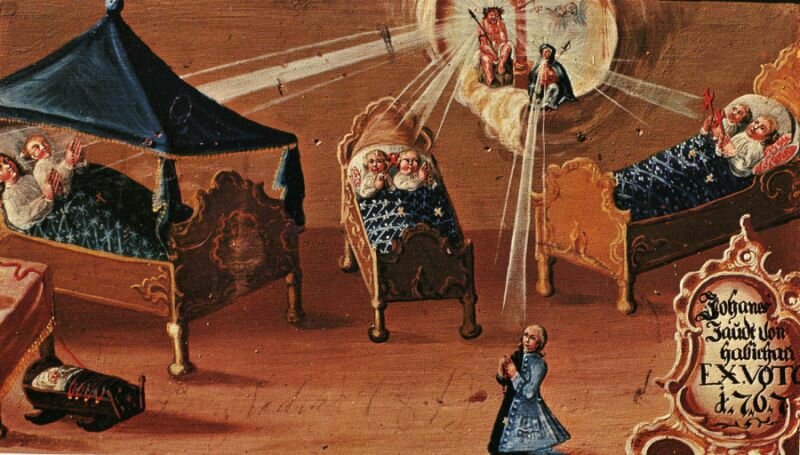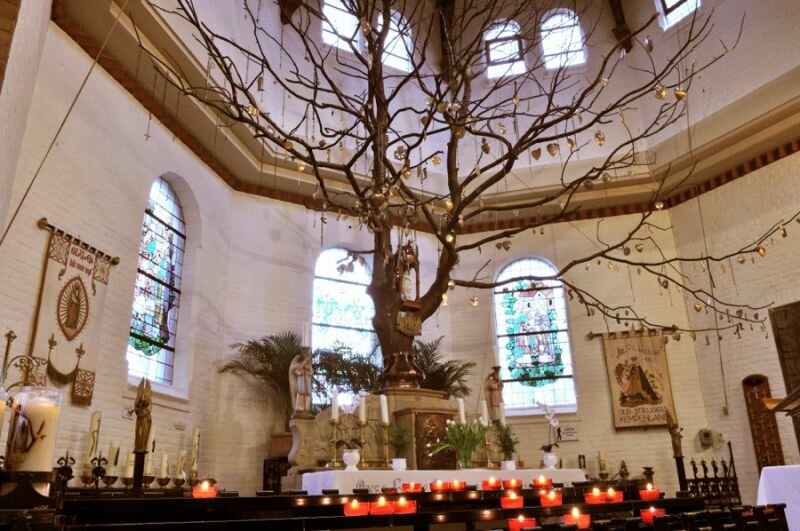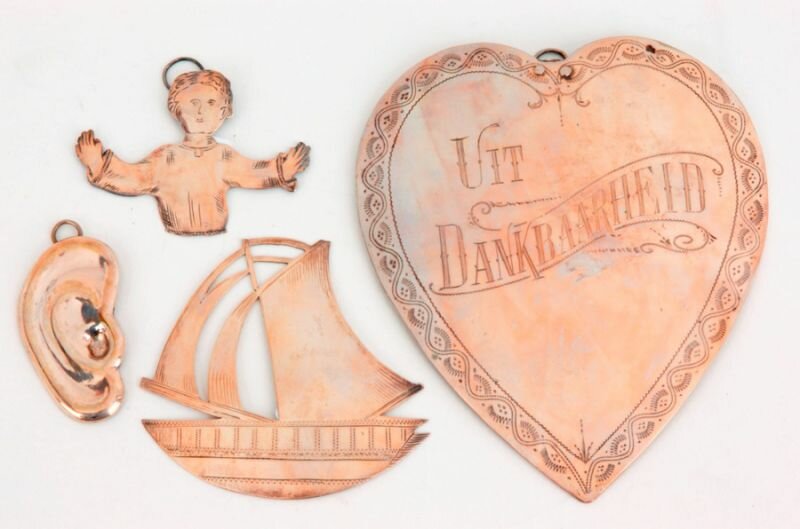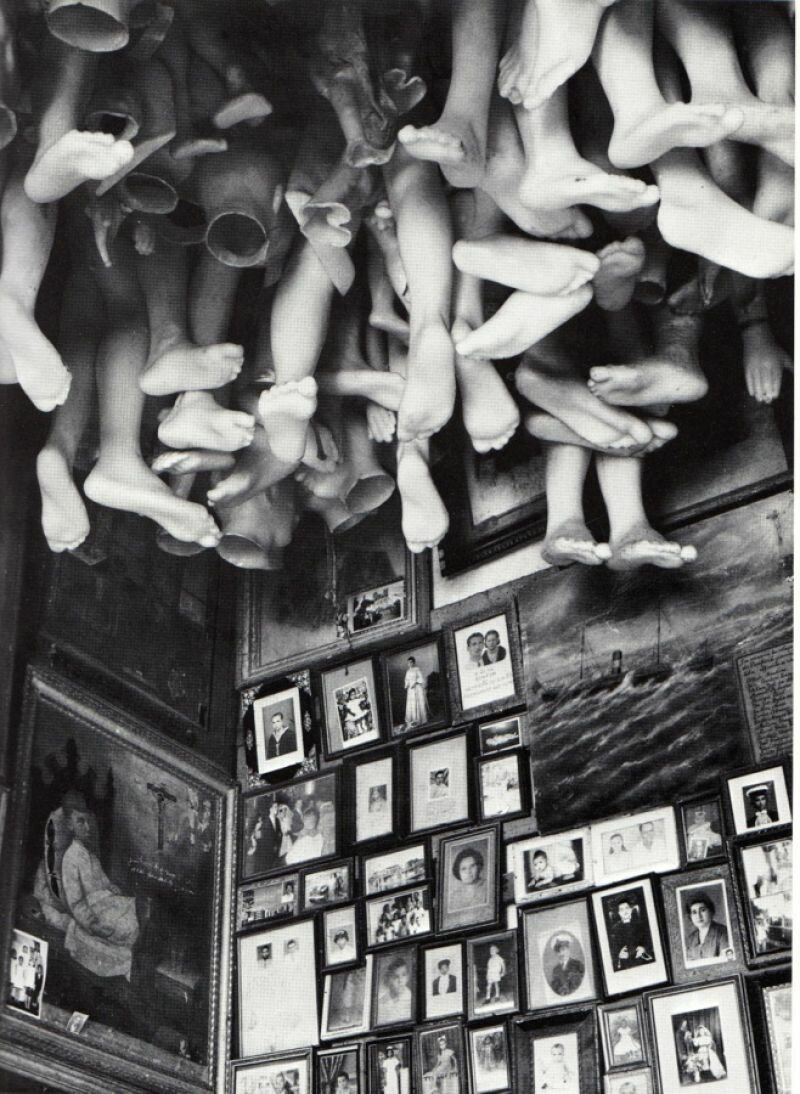
They look like relics from a superstition of a bygone past: arms, legs, hands and feet of wax raised high, hanging from the ceiling of a waiting room at a Brazilian hospital.In fact, they’re a good sign. They represent the tangible evidence of recovery since its only when a patient is successfully healed that his gratitude and respect is expressed by leaving the due saint an ex-voto (Latin for: from the vow made.) Doctor heal their patients by the grace of a saint or by that of the holy Maria: a relationship that no longer seems plausible to us, but is still very normal in Latin America and Southern Europe.
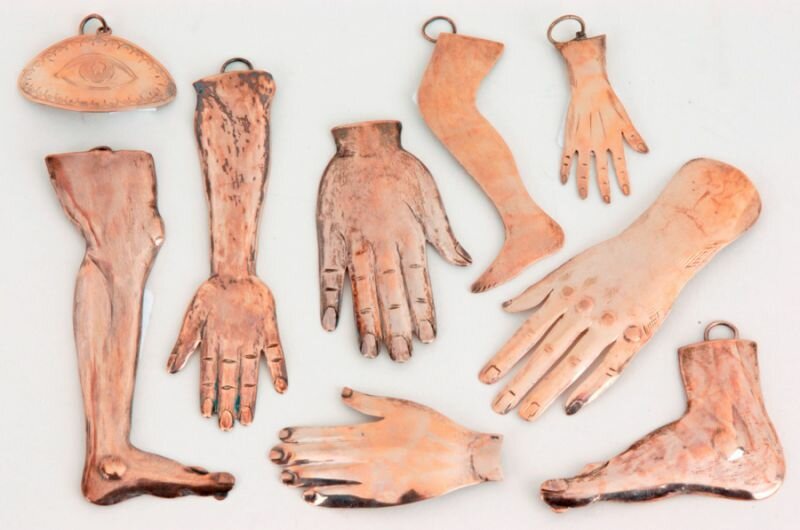
The ex-voto culture is as old as it is diverse. Calling on saints and gods for health and fertility is an ancient tradition. Like the pits found in the vicinity of Etruscan temples filled with votive offerings—feet, hands, breasts and eyes. This tradition is still upheld in Catholic countries, although the material and forms of the ex-votos have become more varied. The more simple ex-votos are made of silver plated copper, the more costly ones of solid silver. Some of the most attractive ones depicts the ailments or accidents they are devoted to curing or preventing. A man falling from the roof, a rider being catapulted out of his saddle, a woman being struck by lighting. But in the cloud (heaven) Maria, or a saint, watches over and ensures that all is well.
